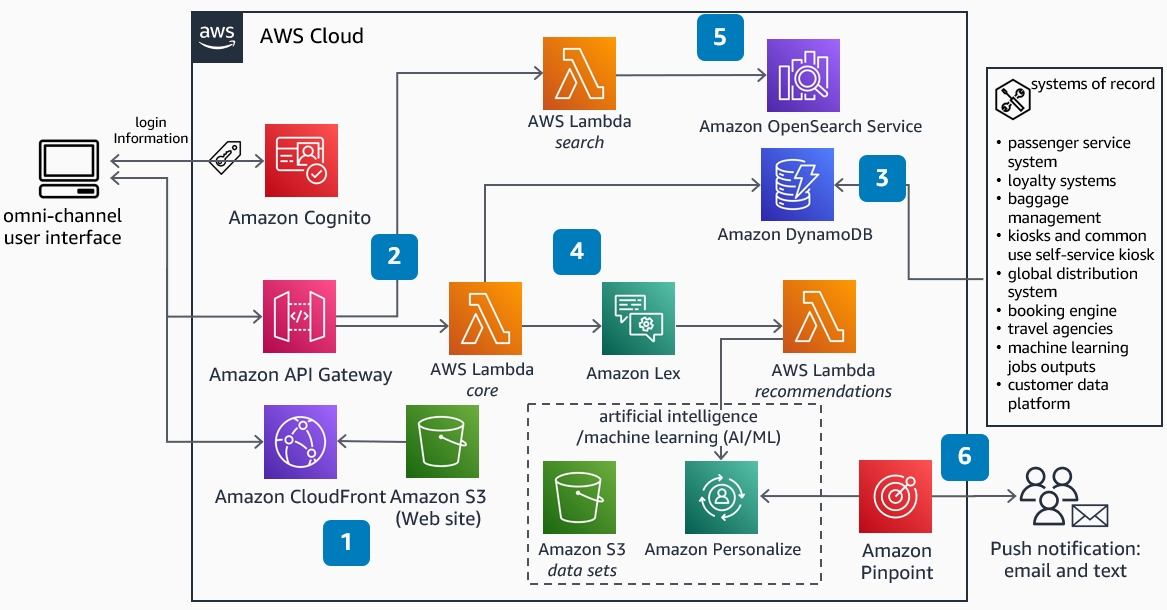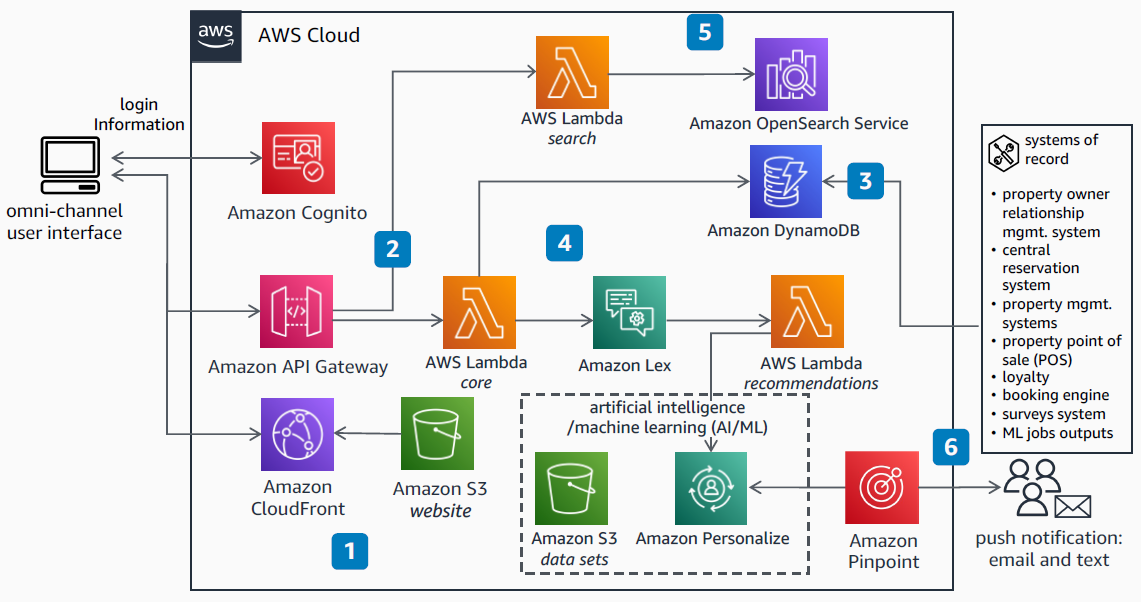- AWS Solutions Library›
- Guidance for Omni-Channel Customer Engagement for Travel & Hospitality on AWS
Guidance for Omni-Channel Customer Engagement for Travel & Hospitality on AWS
Deliver personalized customer service by improving the customer experience through their channel of choice, at every stage of the traveler and guest journey
Overview
This Guidance features an integrated user interface for Travel & Hospitality customer service teams. With built-in voice, text, chat, and email applications, customer service teams can respond to customers from a single screen and build new workflows with their existing customer service applications. Customer service that spans multiple channels can improve loyalty program net promoter scores (NPS) and customer satisfaction scores (CSAT), while also reducing costs.
How it works
Airlines

Lodging

Well-Architected Pillars
The architecture diagram above is an example of a Solution created with Well-Architected best practices in mind. To be fully Well-Architected, you should follow as many Well-Architected best practices as possible.
The reference architecture can be scripted using an Amazon CloudFormation template. You can next add the CloudFormation template to your own development pipeline, and deploy in your cloud environment. Using Amazon CloudWatch, you can get Observability with level metrics, and personalize dashboards and logs.
Using Amazon Cognito user pools, you can use identity pools to provide built-in user management. The AWS Lambda backend has access only to the services they need, with least privilege roles. The customer data in Amazon DynamoDB is encrypted at rest.
All the serverless components are highly available, and automatically scale based on usage. We recommend Amazon DynamoDB cross-Region deployment for higher availability.
Serverless architectures give you the ability to provision the exact resources that the workload needs. CloudWatch Alarms and Lambda metrics allow monitoring for expected performance. For more unexpected traffic, Amazon DynamoDB can be configured as on-demand; otherwise use provisioned mode for consistent traffic.
Serverless architectures have a pay-per-value pricing model and scale based on demand. A good implementation is to share the same key-value tag for assets that belong to a project programmatically, and then create custom reports in AWS Cost Explorer using the key value tags.
By choosing serverless services, you use only the resources that you need, reducing unnecessary emissions.
Disclaimer
Did you find what you were looking for today?
Let us know so we can improve the quality of the content on our pages